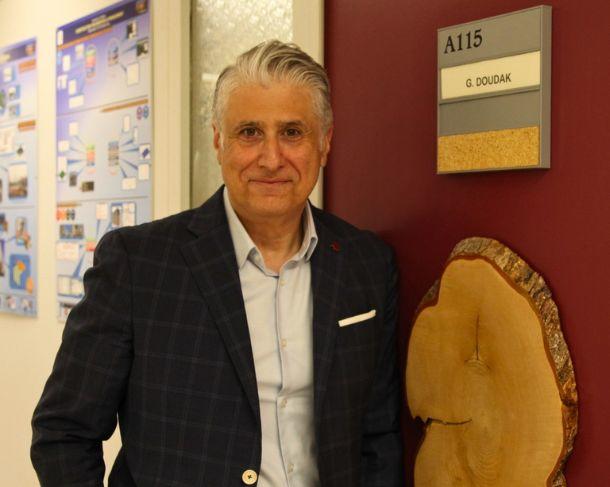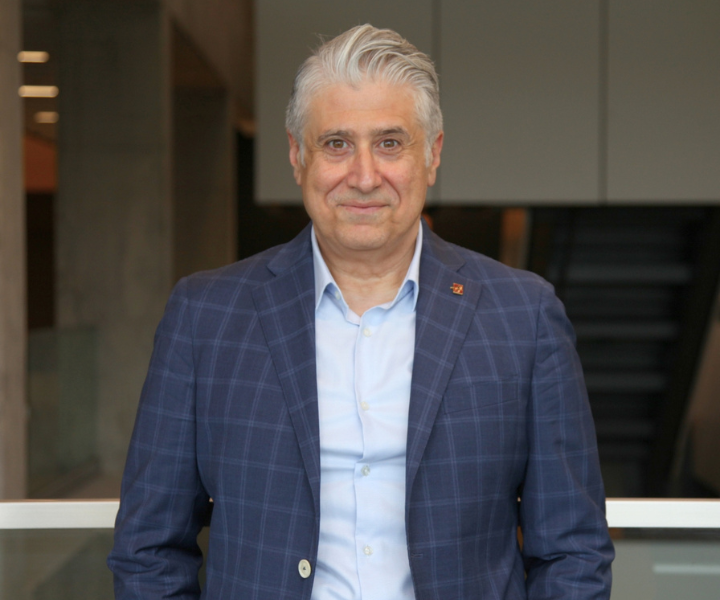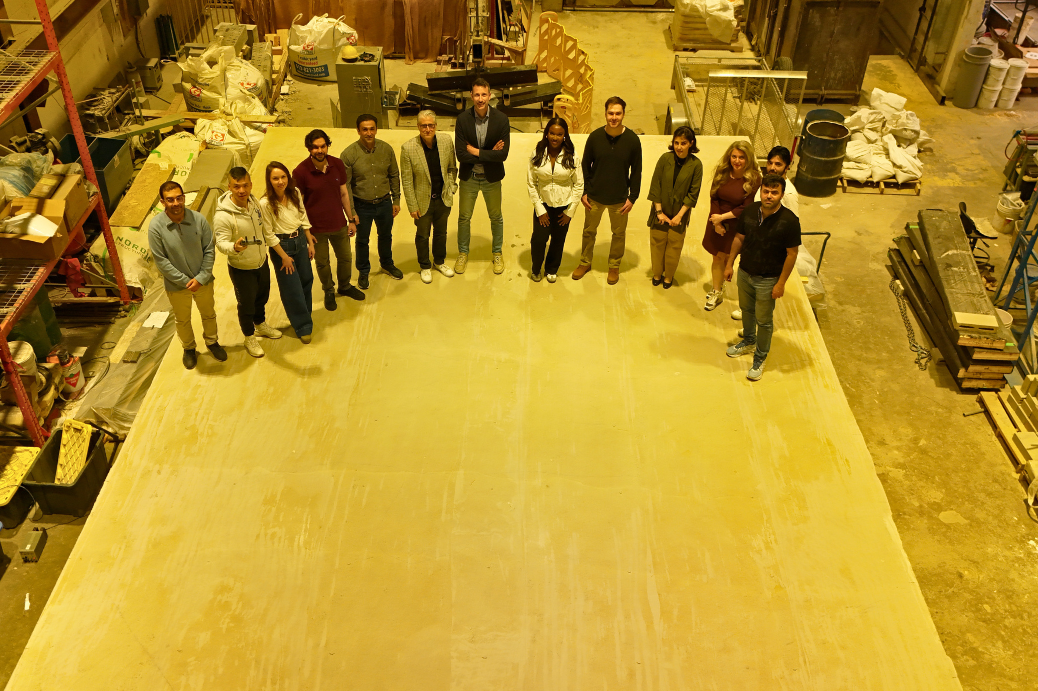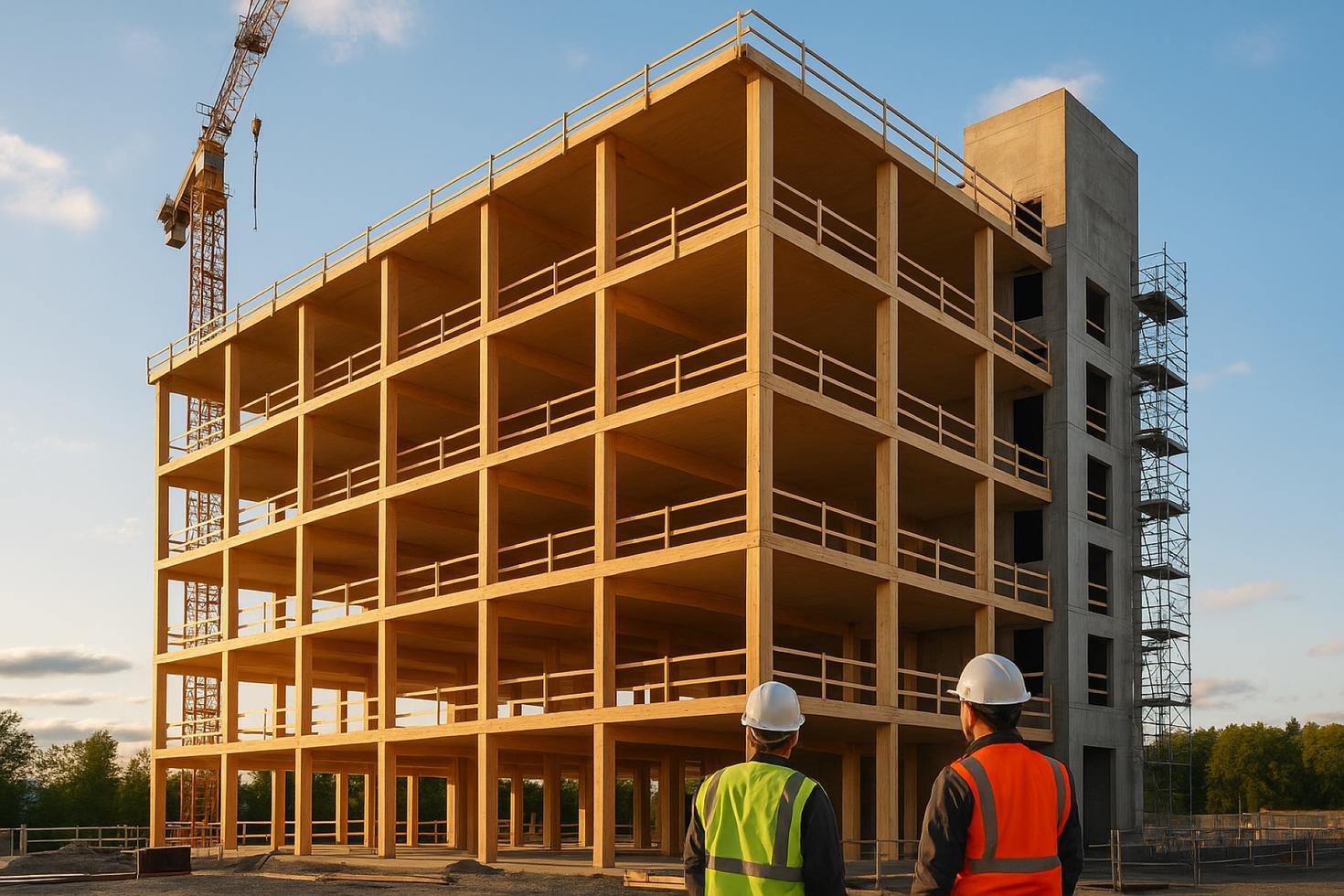Ghasan Doudak, who is a professor in the Department of Civil Engineering at uOttawa, is enhancing the safety, resilience and sustainability of contemporary construction practices in Canada through his innovative research on timber and timber-hybrid buildings. Professor Doudak seeks to design mass-timber and hybrid structures that can mitigate the risks associated with extreme loads, such as those caused by wind, earthquakes, blasts and other dynamic forces.

Redefining structural safety in timber buildings
The demand for sustainable construction is growing and so is the need for more robust and environmentally friendly materials. As a renewable material, wood presents a viable solution, but safety concerns and misconceptions have long hindered its use in structural applications.
Professor Doudak’s work has debunked the myth that timber buildings are inherently weaker than their steel or concrete counterparts. His research shows that with proper design and construction techniques, as well as targeted and efficient selection of material combinations, timber structures, whether standalone or part of hybrid systems, can perform exceptionally well, even under extreme loading conditions, matching other materials in both resilience and adaptability.
His research team combines experimental and analytical methods to understand how complete structural systems respond to environmental loads. This includes dynamic testing of wood shear wall buildings to replicate real-world conditions, field studies that map the load paths within structures to identify weak points, and advanced computer simulations that model building behaviour under various loading scenarios. His collaborative approach, which involves working with both national and international institutions, has helped translate his findings into practical design provisions that have significantly influenced today’s construction techniques.
Professor Doudak’s holistic approach to structural engineering has resulted in the development of highly accurate predictive models and design methodologies, leading to improved engineering practices and more informed building regulations.
Influencing building codes and design standards
One of Professor Doudak’s most significant contributions is his direct impact on Canada’s building codes and standards. His research has played a crucial role in shaping Canadian regulations, particularly those that apply to blast-resistant, seismic-resistant and wind-resistant designs for timber buildings.
Blast-resistant design
Professor Doudak’s work has influenced the development of design provisions in the CSA S850 blast design standard, ensuring that timber buildings are equipped to resist high-impact forces. The 2023 revision of this standard incorporated his team’s research on damage assessment methodologies for light-frame wood stud walls, dynamic strength increase factors for timber elements, and a new design philosophy that promotes ductile failure modes in timber connections.
These advancements have equipped Canadian and international engineers with more precise tools to evaluate and strengthen structural integrity against blasts
Seismic-resistant design
Professor Doudak has developed non-linear modeling parameters for Canadian light-frame shear walls and presented capacity-based design procedures that optimize energy dissipation and protect against brittle failure of cross-laminated timber (CLT) shear walls.
These findings have been incorporated into the 2024 edition of the CSA O86 standard, which governs wood engineering design in Canada. By providing consistent and reliable design approaches, Professor Doudak’s work is helping to better protect communities in earthquake-prone regions.
Wind-resistant design
Extreme wind events, including tornadoes, create significant risks for buildings. Professor Doudak’s work on wind loading and corresponding structural behaviour has generated valuable field and wind tunnel data to assess existing building codes, improve understanding of load distribution patterns in wood structures, and develop enhanced wind-resistant construction guidelines. His expertise was also instrumental during the development of the CSA S520 (2022) standard, which contains design and construction provisions for low-rise residential and small buildings to resist high wind.
Beam stability design
Professor Doudak’s research on lateral torsional buckling of solid sawn and engineered wood beams has led to major advancements in beam stability design. Through a combination of experimental testing and analytical modeling, his work informed new design provisions approved in the 2024 edition of the CSA O86 standard. By analyzing key stability parameters, boundary connection effects and system-level behaviour, his work has led to safer, more efficient beam designs that feature consistent structural reliability.
Educating the next generation
In addition to his research contributions, Professor Doudak is deeply committed to training the next generation of engineers. His research and active involvement in national code development directly informs his teaching, ensuring that current and future engineers are equipped with the latest information and structural engineering methodologies.
He is a voting member of the National Building Code Standing Technical Committee on Structural Design, chair of the CSA O86 Technical Committee, and a member of the CSA S850 Blast Load Technical Committee, all of which ensure cutting-edge research is directly reflected in national standards and practices.

“Our research is not just about improving structural integrity of the material itself; it’s about creating safer, more resilient communities.”
Ghasan Doudak
— Professor in the Department of Civil Engineering at uOttawa
"By understanding how timber structures respond to extreme conditions, we are helping to shape the future of sustainable construction,” says Professor Doudak.
Professor Doudak is bridging the gap between academic research and real-world applications to shape the future of timber construction and reinforce the safety and sustainability of Canada’s built environment for generations to come.

Get in touch
Are you passionate about sustainable, innovative construction and interested in collaborating on research that shapes global building standards? Contact Professor Doudak to help build smarter, greener and more resilient structures.
